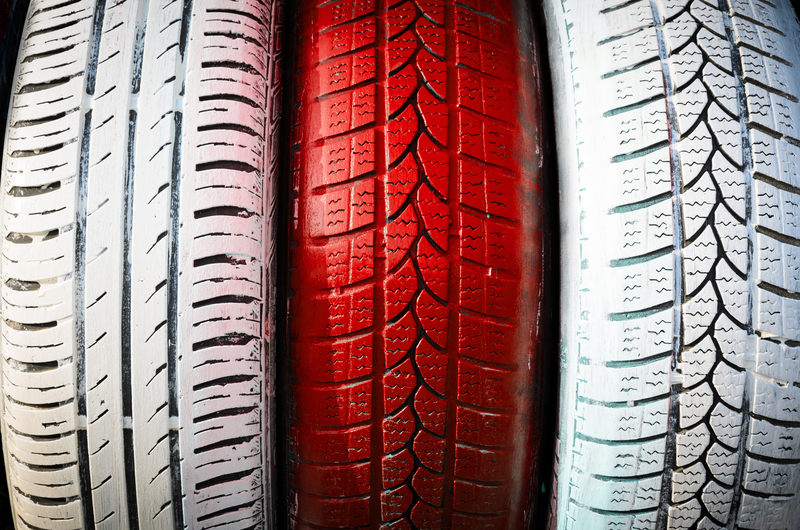Sustainable Methods for Disposing of PPE Waste the Right Way
Since the COVID-19 pandemic, the demand and use of Personal Protective Equipment (PPE) such as masks, gloves, face shields, and gowns have surged across the globe. As these items become essential for public health, a new challenge has arisen: managing the massive increase in PPE waste. Improper disposal methods are detrimental to both our environment and public safety. This comprehensive guide explores sustainable PPE waste disposal methods designed to minimize environmental impact and support a healthier planet.

Why is Proper PPE Waste Disposal Important?
The surge in single-use PPE has resulted in a significant environmental burden. Disposable masks and gloves are commonly found littering streets, clogging waterways, and harming wildlife. As PPE is often made from plastics and synthetic materials, it does not break down easily, leading to increased pollution and microplastics in ecosystems. Properly disposing of PPE waste sustainably is crucial for several reasons:
- Prevents environmental contamination: Prevents plastic pollution and microplastic formation in soil and water.
- Reduces health risks: Mitigates the possible spread of pathogens from contaminated PPE waste.
- Supports recycling efforts: Facilitates sorting and reprocessing of materials for reuse.
- Protects wildlife: Minimizes the risk of animals ingesting or getting entangled in discarded PPE.
- Conserves resources: Encourages the adoption of reusable and degradable PPE where possible.
Understanding the Scale of PPE Waste
A staggering estimate by the United Nations Environment Programme reveals that globally, 75% of used masks and other pandemic-related plastic waste will eventually end up in landfills or the ocean. The improper management of PPE not only exacerbates landfill issues but also threatens marine life and the health of ecosystems. As individuals, businesses, and communities, adopting sustainable PPE disposal options is necessary now more than ever.
What Makes PPE Waste Difficult to Manage?
PPE items are mainly designed for single use and composed of non-biodegradable materials such as polypropylene, a type of plastic. Furthermore, due to the risk of contamination with viruses, bacteria, or chemicals, PPE waste is often classified as biomedical or hazardous waste. This classification poses unique challenges:
- Risky handling and collection procedures.
- Limited options for recycling due to contamination.
- Compatibility with standard waste management systems is low.
Sustainable Approaches for Disposing of PPE Waste
To address the considerable impact of PPE disposal, several innovative and eco-friendly solutions have been developed. Below, we detail the most effective sustainable PPE waste disposal methods for various settings.
1. Segregation at Source
Segregating PPE waste from regular waste is the foundation of responsible disposal. Designating clearly labelled PPE waste bins at public locations, hospitals, offices, and homes allows for safer and more efficient collection. Key practices include:
- Using color-coded bags and bins to differentiate PPE waste from recyclables and organic materials.
- Avoiding mixing of used PPE with other general waste streams.
- Educating users about bin locations and disposal instructions.
2. Incineration with Emission Controls
Incineration is a commonly used method for treating contaminated PPE waste, as it destroys harmful pathogens. However, uncontrolled incineration can emit toxic gases and contribute to air pollution. Modern, sustainable incineration processes use advanced filtration systems and emission controls to:
- Significantly reduce harmful emissions (like dioxins and furans).
- Convert non-recyclable PPE waste into energy through waste-to-energy (WTE) plants.
- Minimize ash residue for landfill disposal.
While not a perfect solution, emission-controlled incineration is often the best option for handling hazardous, non-recyclable PPE material and is an essential component in sustainable PPE waste management.
3. Mechanical and Chemical Recycling
Recycling offers an effective way to limit the environmental footprint of PPE waste. While recycling contaminated PPE is complex, advancements in mechanical and chemical recycling technologies have expanded the possibilities:
- Mechanical recycling involves cleaning, shredding, and reprocessing PPE plastics into pellets for manufacturing new products.
- Chemical recycling breaks down PPE plastics at the molecular level, allowing for the production of virgin-quality materials or even fuels.
Several pilot programs, such as those run by TerrasCycle and similar companies, have succeeded in collecting and recycling face masks and gloves on a large scale. Recycling not only saves resources but also reduces the reliance on virgin plastic.
4. Composting Biodegradable PPE
Innovative manufacturers have developed biodegradable and compostable PPE using materials like cellulose, polylactic acid (PLA), or natural fibers. When disposed of correctly, these products break down naturally and return nutrients to the soil, closing the loop in a circular economy. To sustainably dispose of compostable PPE:
- Verify compostability certifications (such as EN 13432 or ASTM D6400) on PPE.
- Deploy dedicated composting bins to segregate and process these items.
- Educate users and staff on proper disposal and contamination avoidance.
This method is ideal for minimizing landfill accumulation and supporting soil health, provided biodegradable PPE is sourced and processed properly.
5. Reusable PPE and Sterilization
One of the most effective ways to reduce PPE waste is to switch from disposable to reusable options wherever possible. Reusable masks, face shields, gowns, and gloves--when properly sterilized--offer equivalent protection while drastically cutting waste generation. Key elements for safe adoption include:
- Ensuring rigorous cleaning and sterilization between uses (e.g., autoclaving, UV-C disinfection, or washing with appropriate solutions).
- Implementing tracking for the lifespan of each reusable PPE piece.
- Providing users with clear instructions for care and maintenance.
Both hospitals and community organizations are increasingly adopting washable PPE made from cotton or advanced technical fabrics, supporting a long-term reduction in disposable PPE waste.
6. Energy Recovery (Pyrolysis and Gasification)
Advanced waste management technologies such as pyrolysis and gasification can convert PPE plastics into energy and valuable chemicals. These thermal processes operate in low-oxygen environments, breaking down plastics into synthetic gas, oils, and char. The end products can be used as fuels or raw materials for various industries. This approach transforms PPE waste from an environmental burden into a potential energy source, and is growing in adoption worldwide.
7. Community and Corporate Take-Back Schemes
Several eco-conscious institutions and businesses are now introducing PPE waste take-back and collection programs. These initiatives encourage individuals and organizations to return used PPE (masks, gloves, etc.) to designated points for specialist processing. Benefits include:
- Centralized collection to ensure safe, efficient, and environmentally sound disposal.
- Greater opportunities for sorting, recycling, or energy recovery.
- Enhanced public awareness of responsible PPE disposal practices.
Some programs even reward responsible behavior, fostering community engagement in sustainable practices.
8. Upcycling and Innovative Reuse
Creative minds have begun to explore upcycling PPE waste into new products or art installations. Filtration materials from used masks have been repurposed into:
- Construction bricks
- Road surfacing materials
- Eco-friendly furniture and accessories
- Community art projects raising sustainability awareness
While upcycling is not a large-scale solution, it showcases potential for value creation from PPE waste and inspires innovations for a circular economy.
Key Recommendations for Sustainable PPE Waste Management
- Choose reusable PPE: Whenever feasible, opt for washable masks and shields.
- Ensure proper disposal: Follow guidelines for hazardous or biomedical waste.
- Support recycling initiatives: Participate in programs collecting and processing disposable PPE.
- Advocate for biodegradable PPE: Encourage manufacturers and suppliers to offer compostable products.
- Promote public awareness: Educate staff, customers, and communities on sustainable PPE waste disposal methods.
- Adopt technological solutions: Support the use of pyrolysis, gasification, or advanced recycling to process waste.
Legal and Regulatory Aspects of PPE Disposal
Proper management of PPE waste is governed by a range of national and international regulations to ensure environmental safety and public health. Key guidance includes:
- World Health Organization (WHO): Offers detailed protocols for healthcare waste management, including PPE, emphasizing segregation, safe storage, and proper treatment.
- US Environmental Protection Agency (EPA): Outlines requirements for management and disposal of hazardous and biomedical waste, including contaminated PPE.
- European Union Waste Framework Directive: Sets overall principles for waste minimization, recycling, and environmentally sound disposal methods.
Organizations must align their procedures with local and global guidelines to guarantee safe and sustainable PPE waste management.
Challenges and Solutions in Implementing Sustainable Methods
Transitioning to sustainable methods for PPE waste disposal does pose some challenges, such as:
- Limited awareness and education on proper disposal methods.
- Lack of infrastructure for specialized collection, recycling, or composting of PPE.
- Higher upfront costs for advanced treatment technologies.
- Potential reluctance to adopt reusable PPE due to convenience and cost concerns.
However, these barriers can be addressed through:
- Educational campaigns and staff training.
- Partnering with waste management companies specializing in PPE.
- Investment in new technologies and research.
- Policy incentives for sustainable PPE procurement and disposal practices.

Future Outlook: Innovations and Moving Forward
As technology and public awareness evolve, expectations for green PPE waste management solutions will continue to rise. Promising future directions include:
- Development of fully biodegradable PPE that performs as well as traditional products.
- Smart tracking and disposal systems using IoT and AI for optimizing collection and treatment.
- Scale-up of chemical recycling and waste-to-energy initiatives worldwide.
- Cross-sector collaboration between governments, industry, and communities.
For a truly sustainable future, every stakeholder--from individual PPE users to multinational corporations--must prioritize environmentally friendly PPE disposal practices.
Conclusion: Making PPE Disposal Sustainable, Safe, and Effective
The rapid increase in PPE waste is a pressing issue demanding urgent and innovative solutions. By understanding the serious impacts of improper disposal, promoting segregation at source, supporting recycling and composting, shifting toward reusable products, and leveraging new technologies, we can collectively manage this waste responsibly.
It's up to each of us to practice and promote sustainable methods for disposing of PPE waste the right way. When individuals, institutions, and policymakers work together, a cleaner, safer, and more sustainable world is absolutely within reach.
